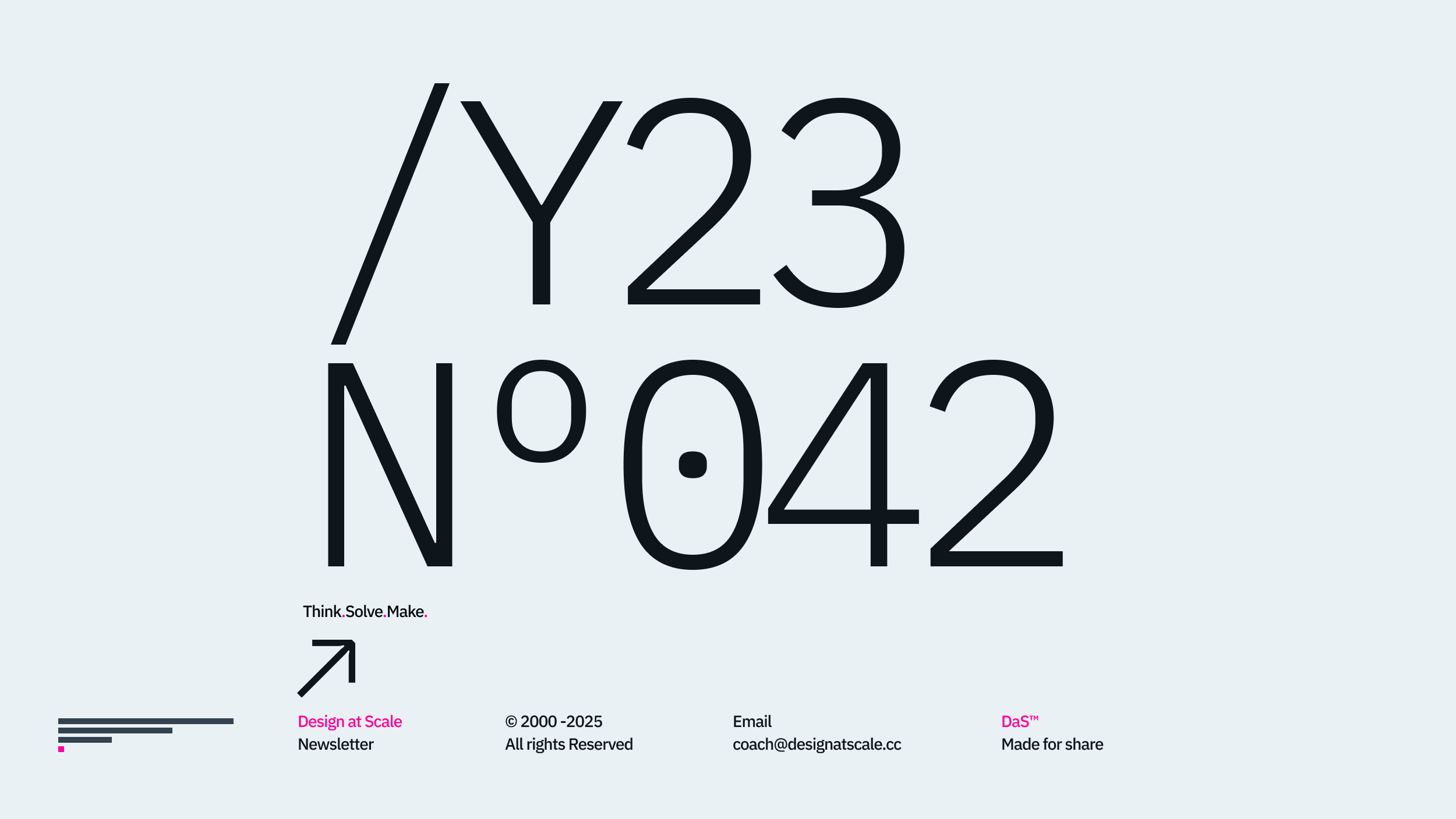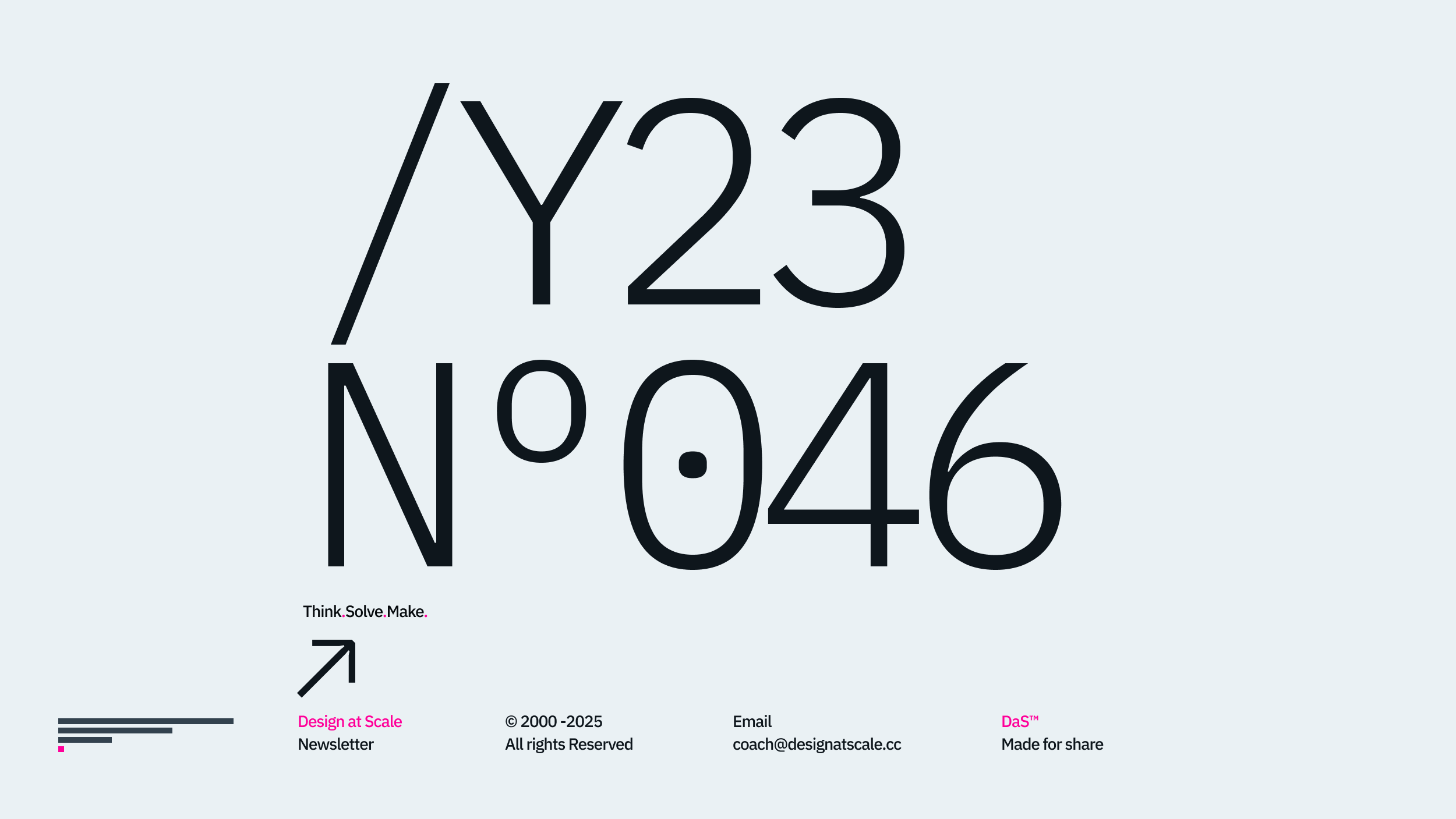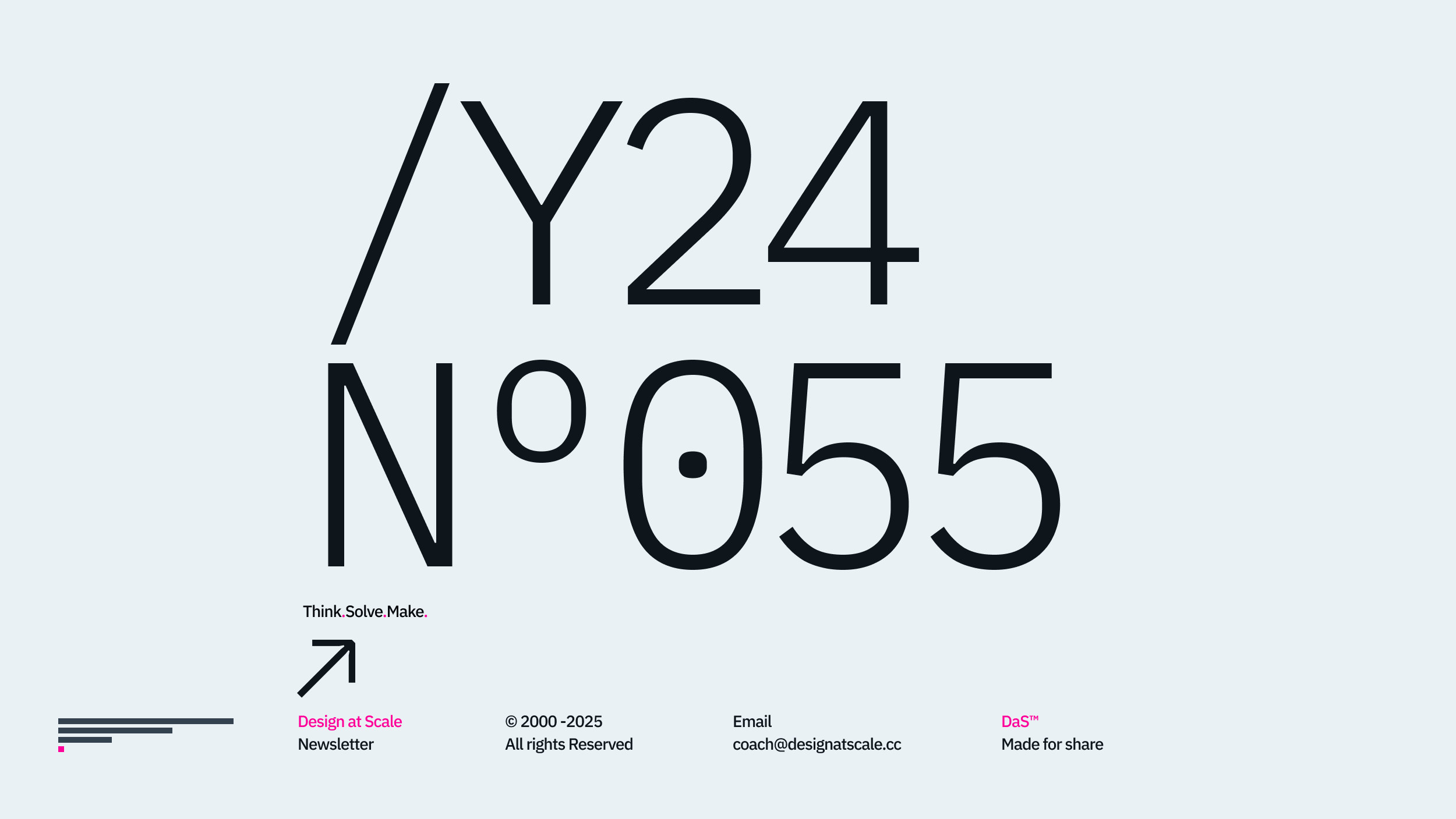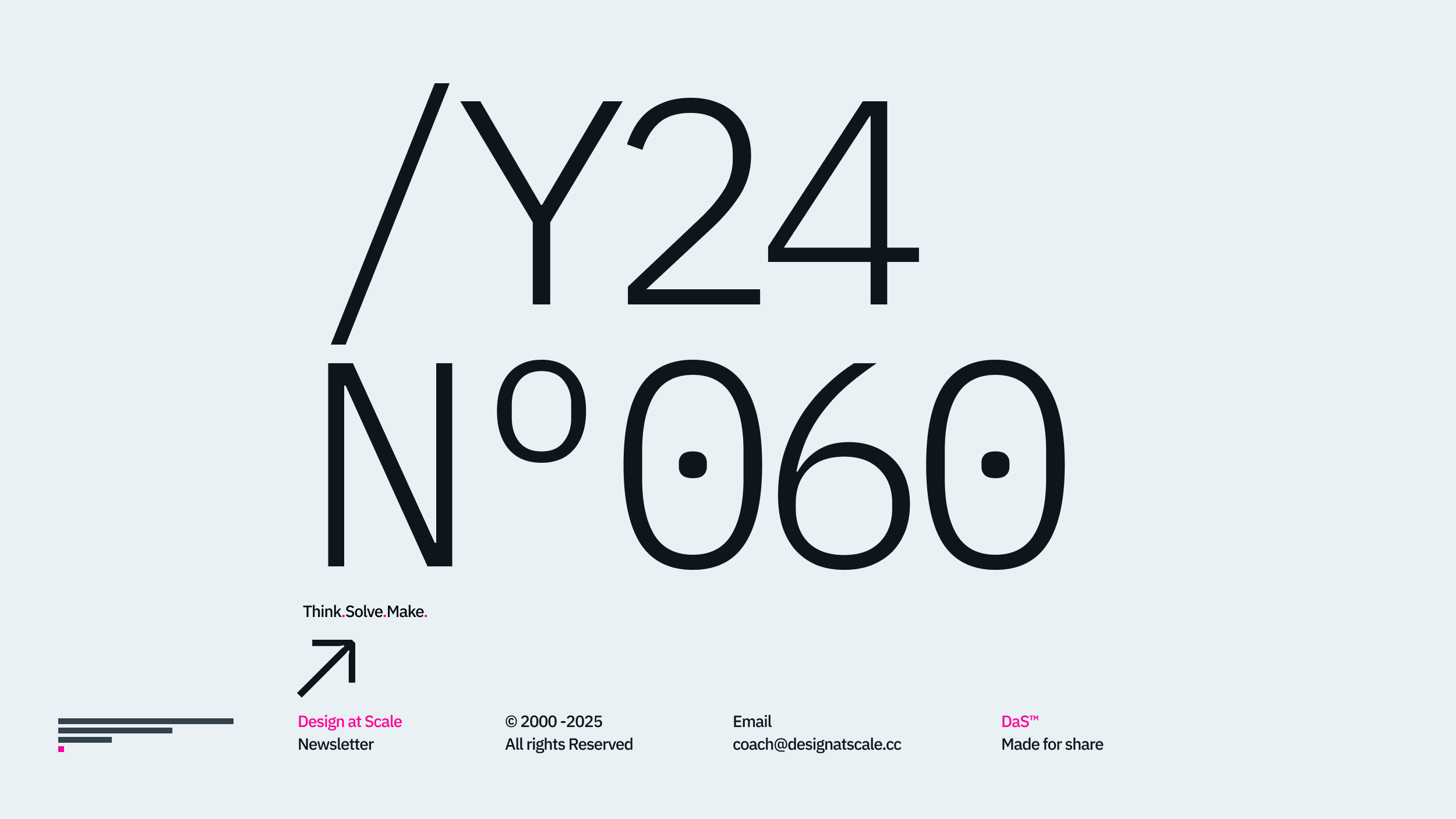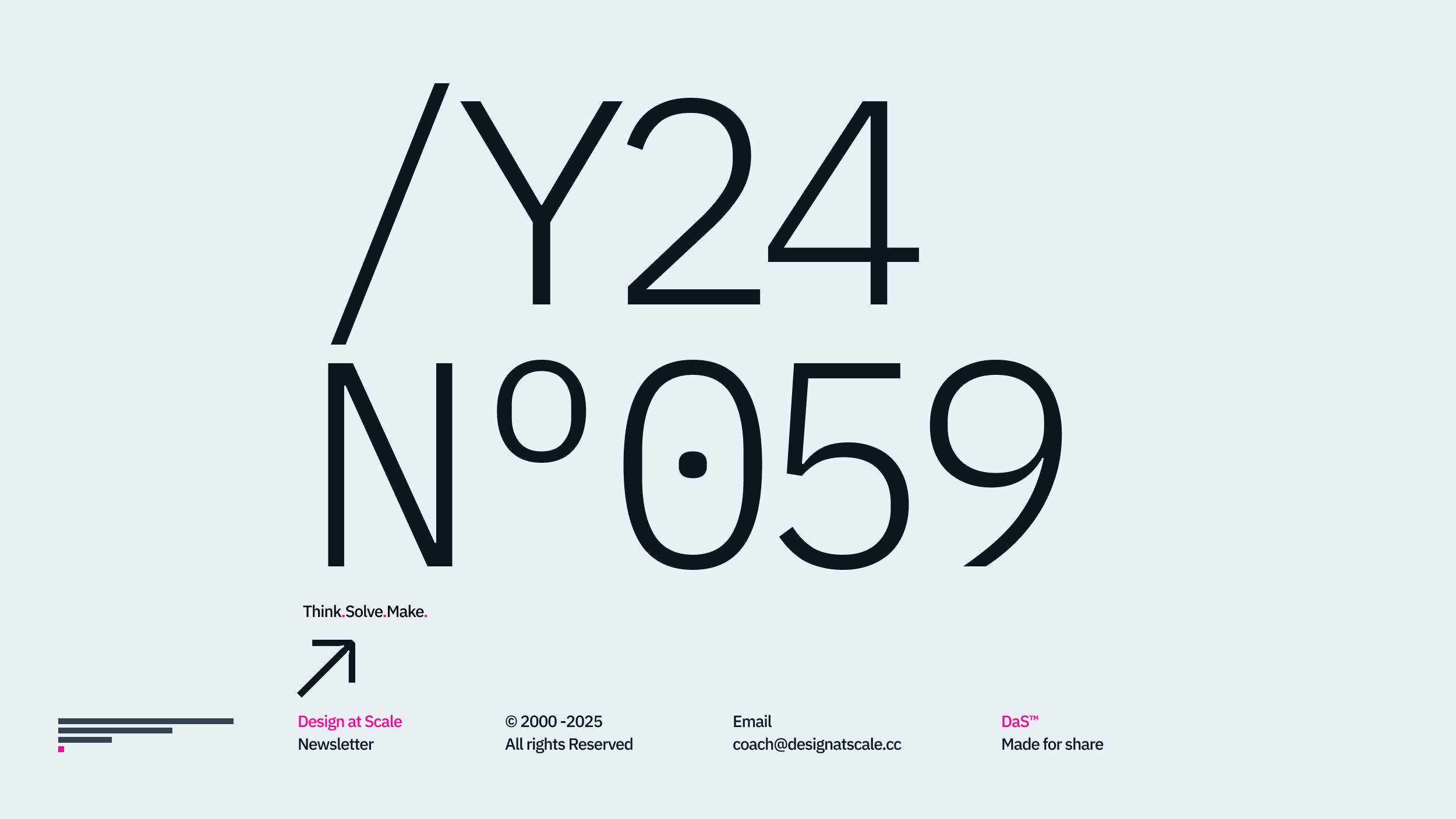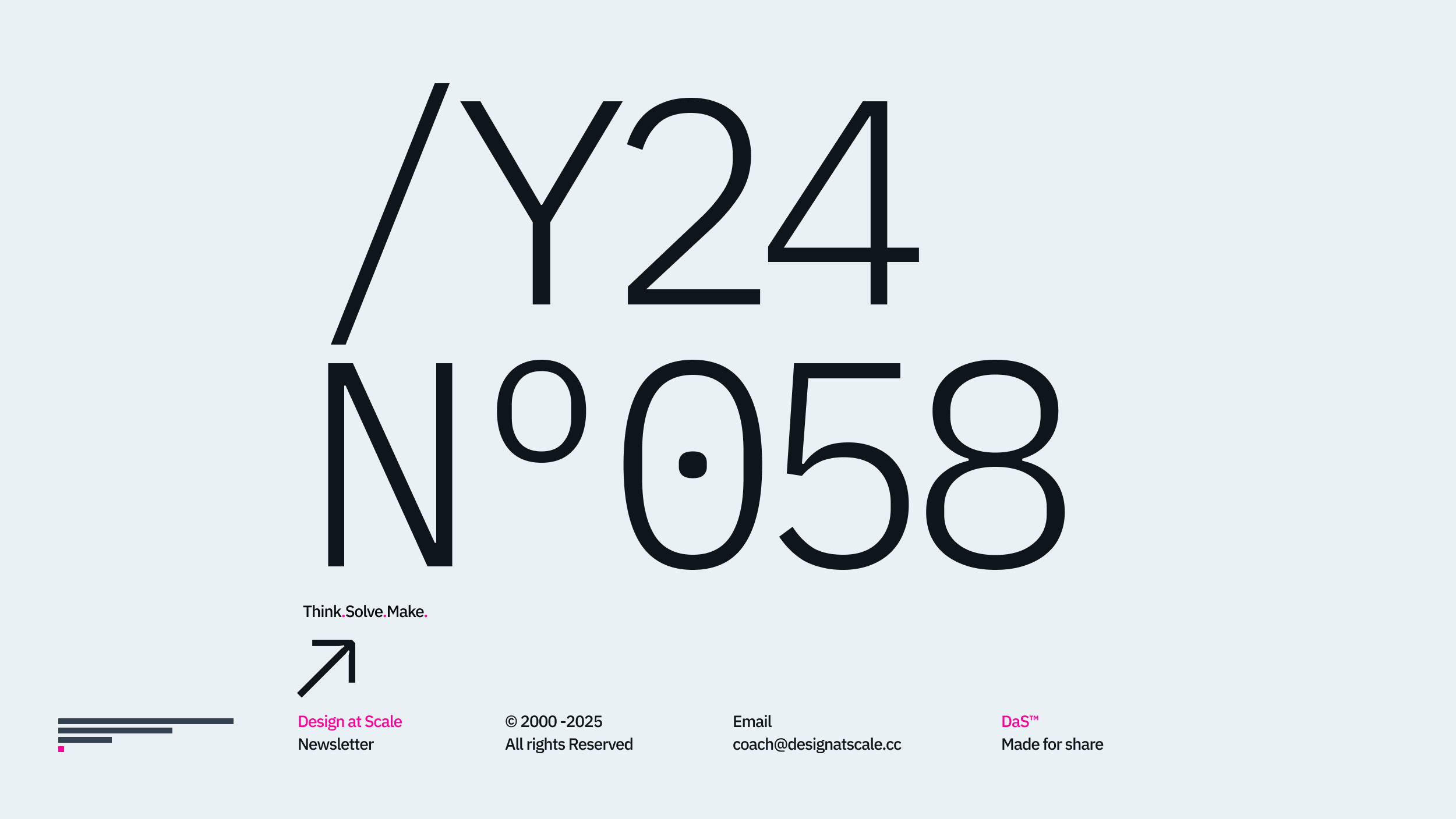Dear (none)Designer,
Welcome back to the twentieth Design at Scale™ Newsletter – focusing on innovation and how design drives change in a large organisation or an agency.
From a business perspective, acquisitions are always beneficial to the organisation as they acquire another business that possesses capabilities that the acquiring organisation does not have.
Each acquisition carries a bitter taste of 10 to 30% layoffs, while the rest get promoted. Restructuring occurs to adapt to the new structural changes that occasionally become permanent. After each acquisition, the department merges and creates multiple roles that need to be readjusted, reformed, or transformed into completely new roles to keep the business going.
A business justification for creating additional value by enforcing a new proposed business structure is a highly debated topic among mergers.
The design department or design units are no different from the rest of the business. Having witnessed three acquisitions throughout my career and recognising the pain this period causes for both internal and external design functions, allows me to speak with confidence that finding the appropriate solution to inevitable changes is never easy.
The first things in question are usually the ownership of what, under what conditions. How will they maintain that ownership going forward? Is the equivalent partner better or worse than maintaining the ownership untouched?
For example, branding, marketing, operation, strategy, or experience? This often puts design directors in a battle against the time and knowledge that is required to sustain the function. Randomly, we see the partnership of two or more entities to make a function that enables them to survive and govern the rest of the services. After all, our product strategy can do a bit of marketing, right?
Equally, we do not need experience anymore; we have our ambitious product team and plenty of tools that can make the experience work.
As budget cuts are inevitable, unity often represents strength and a willingness to collaborate, while others fight for titles. The transparency cut through the noise and created well-expected stability. By reflecting on ecosystems and well-informed networks of designers (as a strength), we enable something far greater – one design function.
This way, design as a function gains more dominance and respectful recognition of their expertise as a group of several small departments, which makes them ready to become a catalyst for necessary transformational changes. Operating in a complex design environment with multiple business horizontals and functional verticals, agencies often struggle to serve clients with complex needs. This environment can be challenging to navigate, as there are loose responsibilities regarding ownership and who is responsible for signing off on what. As the new hierarchy has not been established or communicated, the room for error multiplies.
Rarely do human resources oversee these transitions and genuinely care about the workforce, as they are often focused on maintaining layoffs and public image. With great respect to our HR colleagues, very few people feel heard and understood. That is why many great talents leave, as the companies cannot create an environment that allows employees to perform their duties effectively.
Inevitably, after all the dust settles, a new structure is in place, defined by those who thrive on collaboration, cooperation, and transparency as the foundation of the future organisation is now in place.
In the case of two businesses merging, it is very challenging but not impossible to integrate their design departments into a single, central function that operates in a satellite model. Technology companies are far better at it than finance, healthcare, or retail. Not only because technology organisations are more mature, but also because they reflect on the common ground that it's "code that matters", where others protect and define territories through regulatory, customer care, and departmental hierarchies.
It is often up to the mediator or navigator to set expectations on both sides and create a landscape onto which the old structure can be imprinted; therefore, everybody recognises that after the transition, there is no distinction between the role and the function itself. One of the greatest examples I have seen was transforming a finance institution with two individual design departments into a single core design team that primarily defines the brand, design system, and experience. Where the rest of the teams remain as satellite product teams feeding back to the central team, that way, no one leaves the job, and everybody is doing what they are good at.
For more information, please visit Designa at Scale™ – GRID Magazine, where you can find additional relevant articles that explore hyper-performing teams, self-organising teams of one, teams of 10, and teams of 100 that deliver the value proposition within a product-led environment.





